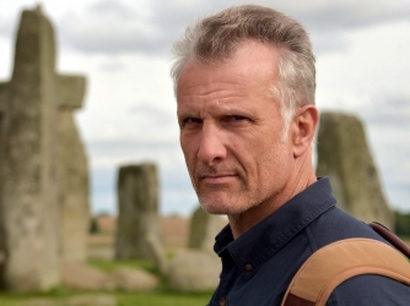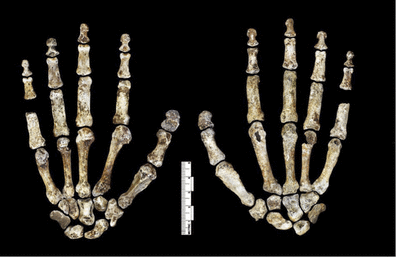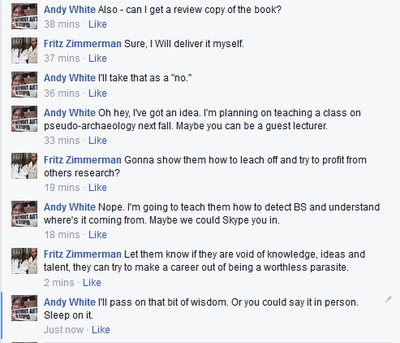 Scott Wolter, author and host of "America Unearthed" (photo from http://www.history.com/shows/america-unearthed/cast/scott-wolter)
Scott Wolter, author and host of "America Unearthed" (photo from http://www.history.com/shows/america-unearthed/cast/scott-wolter) Hi Andy,
I’m one of those “Fringe” people you are talking about and would be happy to address your students if the offer still stands. I’m serious if you’d like to set something up; I’m sure all would learn a great deal from the exchange.
Regards,
Scott F. Wolter P.G.
That's a win. Wolter was the host of the program American Unearthed (which ran for three seasons on H2) and has written multiple books about pre-Columbian connections between the Old World and the New World. He is perhaps best known for his defense of the Kensington Rune Stone as an authentic ancient artifact and his ideas about the journeys and activities of the Knights Templar. He has recently written on his blog about a purported "Hooked X" symbol that he argues may link the biblical Jesus to the Freemasons and various North American rune stones. According to Jason Colavito, Wolter will appear in an upcoming program titled Pirate Treasure of the Knights Templar.
I've seen most episodes of America Unearthed but I haven't yet read any of Wolter's books. I will have his commitment to speak to my class in mind when I prepare my syllabus, however, and I'll be sure to have the students read up on his ideas before his presentation. I don't yet know exactly what he'll talk about - that will be up to him but known ahead of time.
I'm glad that Wolter accepted my offer and contacted me, and I hope some others do the same. I'm just beginning the process of getting things organized (it will be a new course, so there are hoops to navigate to get it approved and on the books), so now would be a great time to step up to the plate. I would love to have someone come in and make a case for pre-Ice Age civilization, ancient astronauts, giants, etc. Send me an email: [email protected].
There are a lot of people teaching these kinds of courses now, but I plan on doing it a little differently. We're going to do it my way: we're going to engage, we're going to ask tough questions, and we're going to listen to the answers. We're going to examine logic, evidence, and the histories and implications of ideas. We're going to kick the doors down, and we're going to have a lot of fun doing it. Stay tuned.




 RSS Feed
RSS Feed
